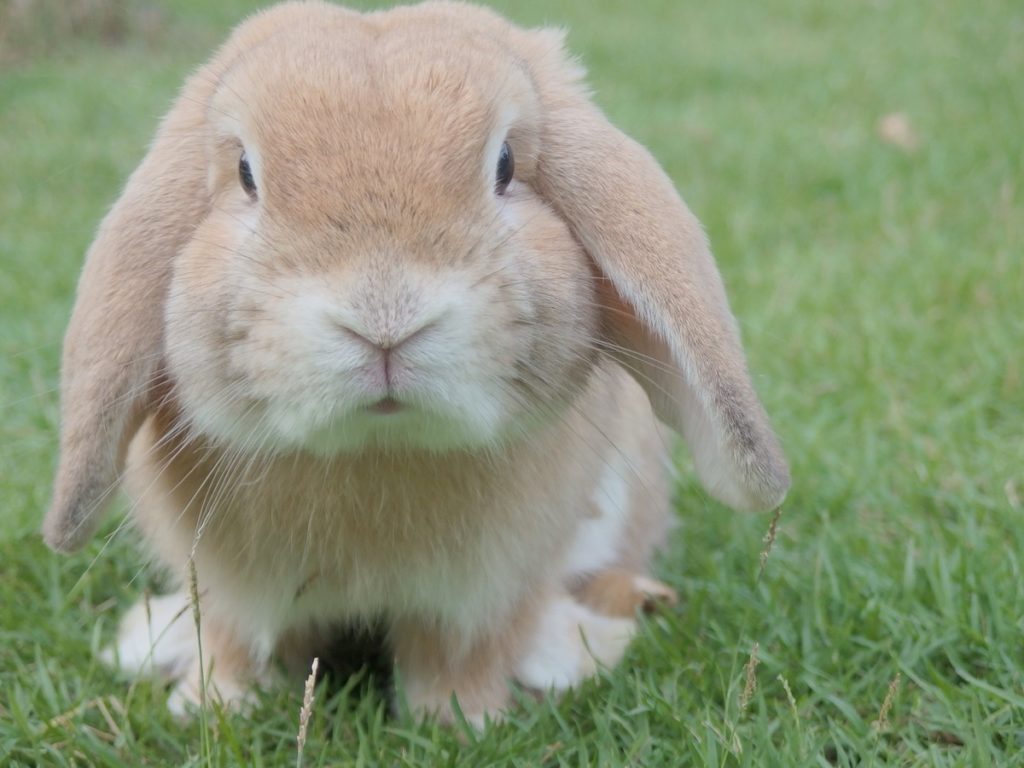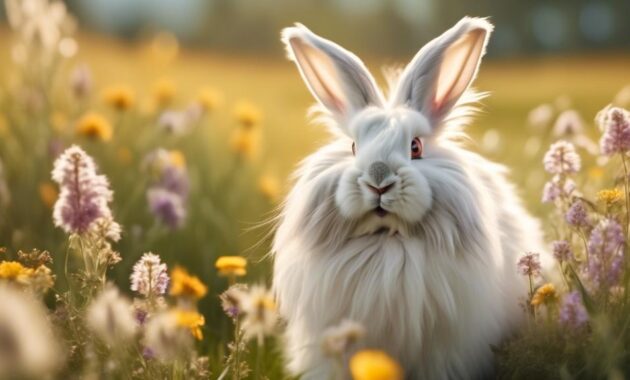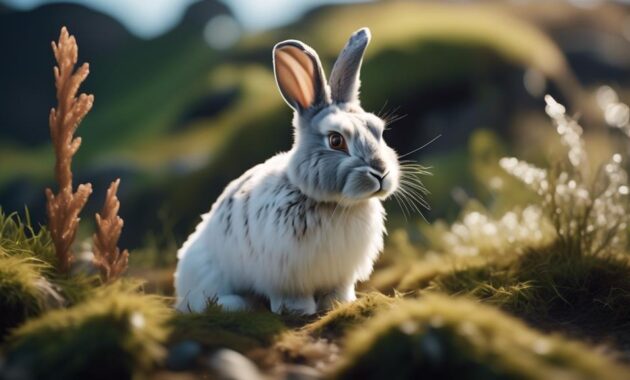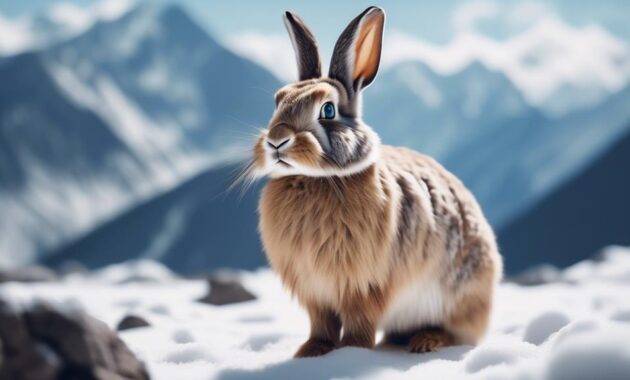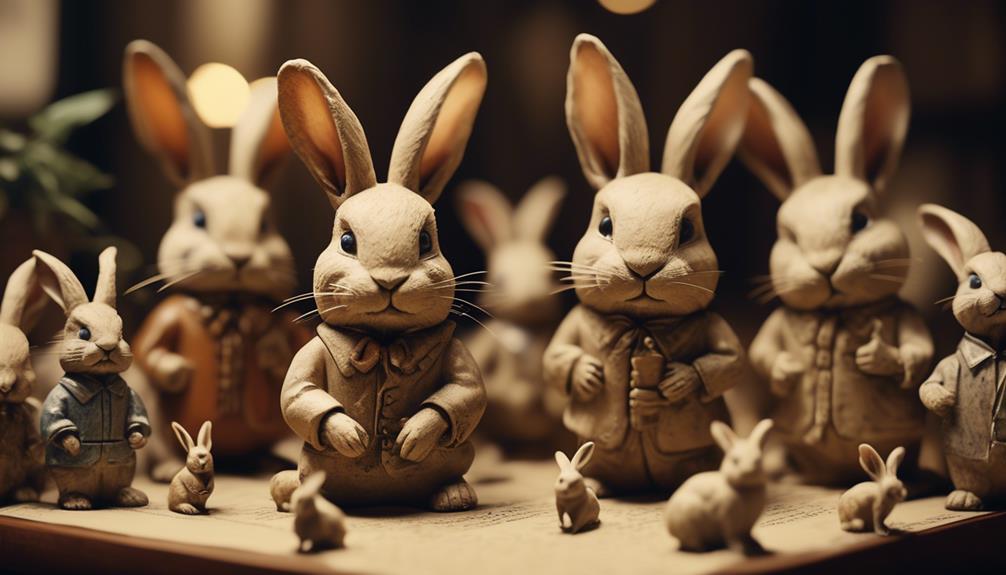
Imagine stepping into a world where the origins of those adorable tan rabbits come to life. The rich history of these captivating creatures stretches back to 1880s England, where dedicated breeders refined their distinctive markings.
But it doesn’t stop there. The story unfolds as we explore how these rabbits made their way to the United States and gained immense popularity.
As you delve deeper into the fascinating history of tan rabbits, you’ll uncover their unique characteristics and care requirements, leaving you with a newfound appreciation for these delightful creatures.
So, let’s embark on this journey together and unveil the captivating tale of tan rabbits.
Key Takeaways
- Tan rabbits were discovered and refined in England in the late 19th century before being introduced to the United States in the 1930s.
- Breeders used selective breeding techniques to establish a breeding line of tan rabbits with desired markings and traits.
- The Tan Rabbit Specialty Club was formed in 1960 to promote and preserve the breed’s unique characteristics and educate breeders and enthusiasts.
- Tan rabbits have distinct physical characteristics, such as fully arched bodies, tall ears, glossy fur, and a medium size, and they are known for their intelligent, energetic, and friendly temperament.
Origin and Discovery of Tan Rabbits
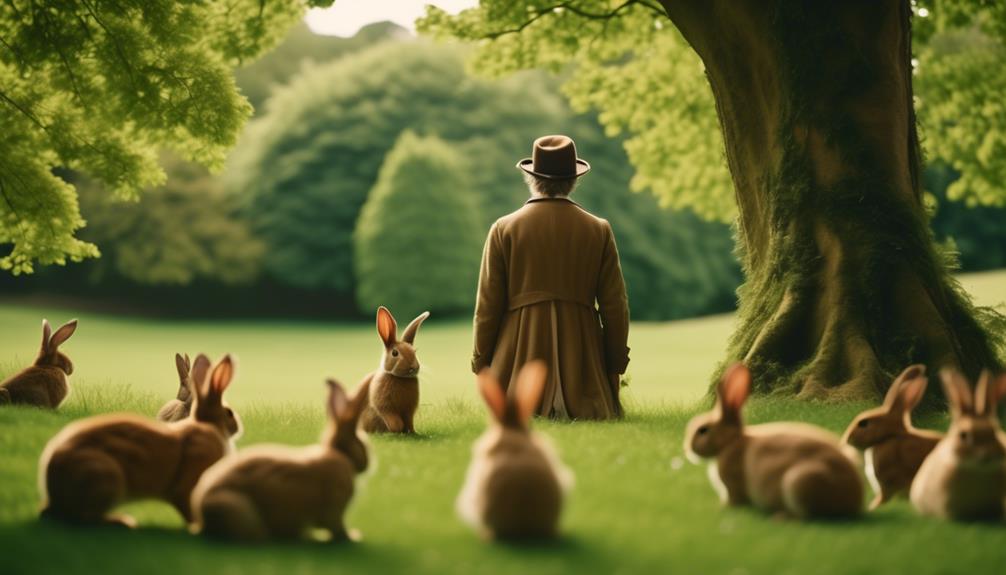
The history of Tan rabbits begins with their discovery in England around 1880. Breeders in England started raising and refining the tan-marked rabbits, and by the 1920s, they established black, blue, and lilac Tan Rabbits.
These rabbits were then introduced to the United States in the 1930s. The Tan Rabbit Specialty Club was formed in 1960, showing the increasing popularity and recognition of this breed.
Tan rabbits are known for their fully arched bodies, lean and well-balanced physique, and large ears that stand tall. They have a glossy flyback fur and are medium-sized rabbits.
In terms of care, they have easy-to-maintain coats that require spot-cleaning with a damp cloth and shedding twice a year.
Breeding and Refining of Tan-Marked Rabbits
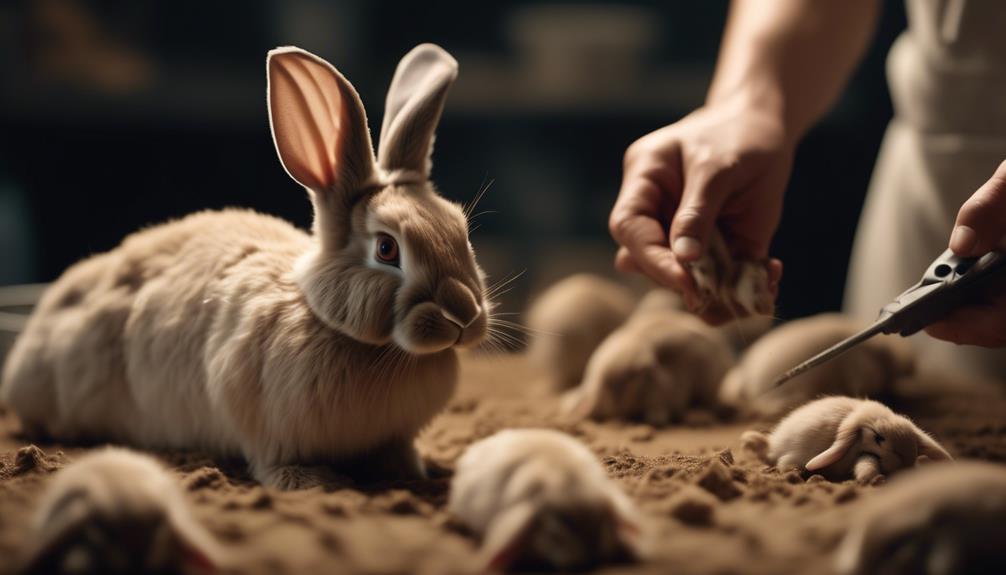
To breed and refine tan-marked rabbits, breeders in England began experimenting with different breeding techniques and selecting rabbits with the desired tan markings. They focused on breeding rabbits that had a clear and consistent tan coat color, with distinct markings on specific parts of the body.
By carefully selecting rabbits with the desired traits and breeding them together, breeders were able to establish a breeding line of tan rabbits that consistently produced offspring with the desired tan markings. Over time, these breeding techniques were refined and improved, resulting in the development of the black, blue, and lilac varieties of tan rabbits.
Today, breeders continue to use selective breeding to further refine the tan markings and enhance the overall quality of tan rabbits.
Introduction of Tan Rabbits to the United States

Tan rabbits made their way to the United States in the 1930s, captivating breeders and enthusiasts with their unique markings and charming personalities.
- Breeders in England had been refining the tan-marked rabbits since the late 1800s.
- By the 1920s, England had established black, blue, and lilac Tan Rabbits.
- The introduction of Tan Rabbits to the United States in the 1930s sparked further interest in the breed.
- The Tan Rabbit Specialty Club was formed in 1960, further solidifying the breed’s popularity.
- Today, Tan Rabbits can be found across the United States, with dedicated breeders continuing to promote and preserve their unique qualities.
The arrival of Tan Rabbits in the United States opened up new opportunities for breeders and enthusiasts, allowing them to admire and work with these captivating creatures firsthand. The breed’s distinct markings and delightful personalities quickly won over the hearts of many, leading to the establishment of the Tan Rabbit Specialty Club and the continued growth of the breed’s presence in the country.
Formation of the Tan Rabbit Specialty Club
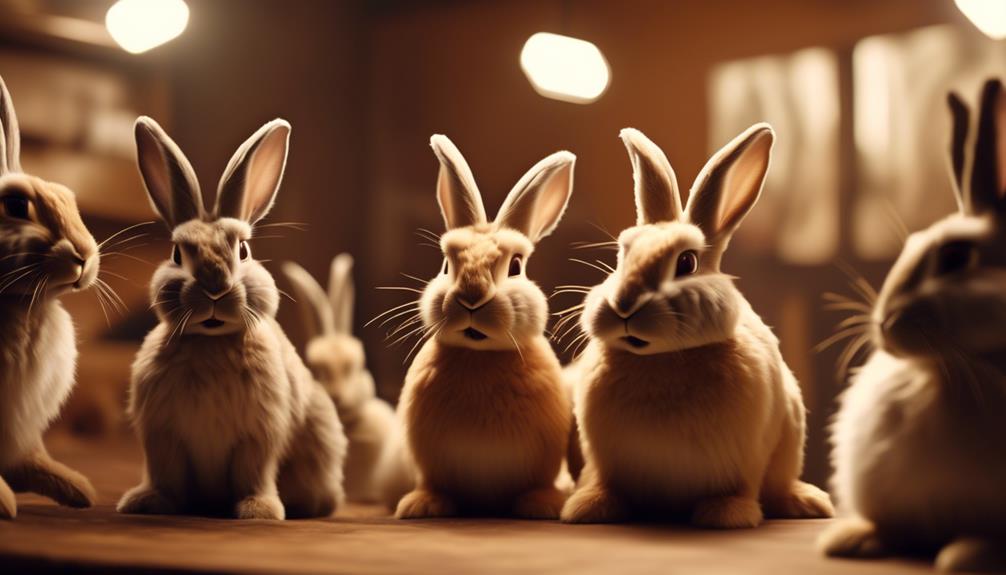
After the introduction of Tan Rabbits to the United States in the 1930s, their growing popularity among breeders and enthusiasts led to the formation of the Tan Rabbit Specialty Club. This club, established in 1960, aimed to promote and preserve the breed’s unique characteristics and standards. The club provided a platform for tan rabbit enthusiasts to come together, share knowledge, and participate in events such as shows and competitions. The Tan Rabbit Specialty Club also played a crucial role in educating breeders and enthusiasts about responsible breeding practices, ensuring the breed’s continued development and improvement. Through their dedication and passion, the club members have contributed to the growth and recognition of the tan rabbit as a distinct and beloved breed within the rabbit community.
| Tan Rabbit Specialty Club | |
|---|---|
| Formation Year | 1960 |
| Objectives | Promote and preserve |
| the breed’s standards | |
| Activities | Shows, competitions, |
| knowledge sharing |
Characteristics of Tan Rabbits
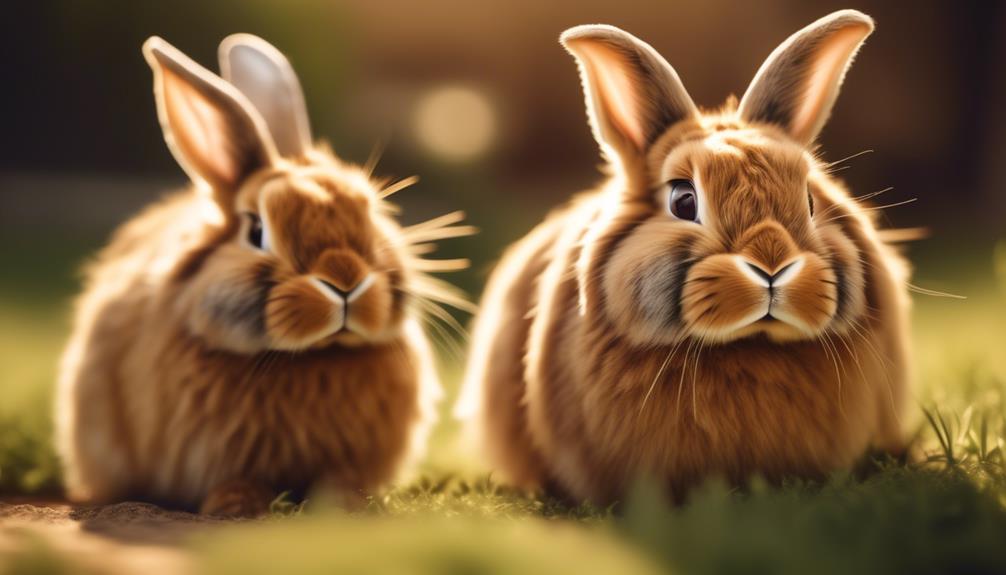
With their fully arched body, lean and well-balanced physique, and large ears that stand tall, Tan Rabbits possess distinctive characteristics that set them apart from other breeds. These fascinating rabbits have a number of traits that make them unique:
- Glossy flyback fur that gives them a sleek and shiny appearance.
- A medium-sized body that isn’t too small or too large.
- An intelligent and energetic temperament, making them engaging and fun pets.
- A sweet and friendly nature, making them great companions for individuals or families.
- Suitable for both indoor and outdoor living, allowing for versatility in their care.
These characteristics make Tan Rabbits a popular choice for rabbit enthusiasts looking for a breed that stands out both in appearance and personality.
Care and Maintenance of Tan Rabbit Coats
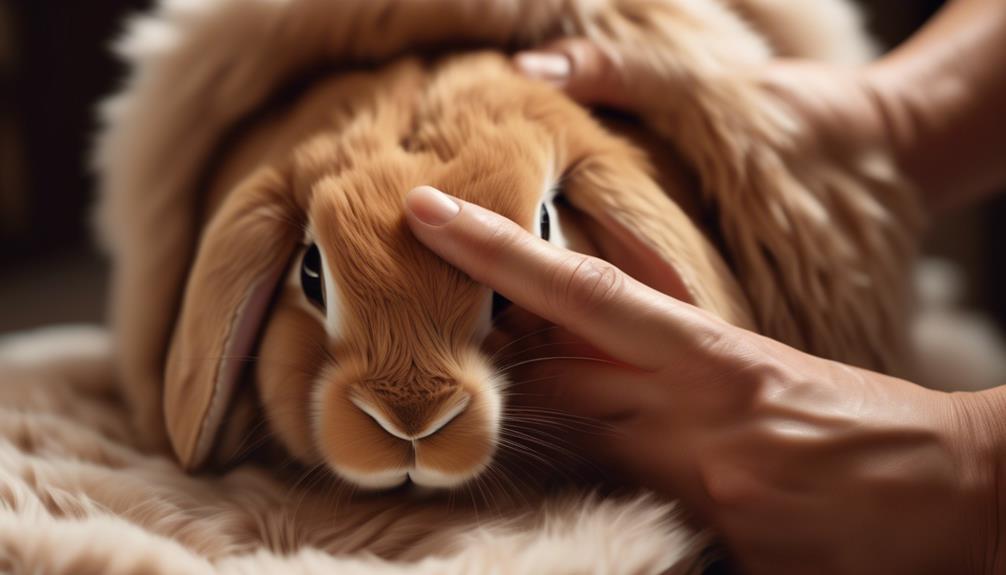
To keep your Tan Rabbit’s coat in optimal condition, regular grooming and care are essential. The glossy flyback fur of the Tan Rabbit requires minimal maintenance, making it relatively easy to keep up with.
Spot-clean any dirt or debris with a damp cloth as needed.
Tan Rabbits shed their fur twice a year, so it’s important to brush them outdoors during these heavy shedding periods. This will help remove any loose fur and prevent it from matting.
Aim to groom your Tan Rabbit at least once every two weeks to keep their coat looking sleek and healthy.
Additionally, ensure their diet consists of 70% hay and provide them with a spacious enclosure for hopping and jumping.
With proper care, your Tan Rabbit’s coat will remain soft and beautiful.
General Care Tips for Tan Rabbits
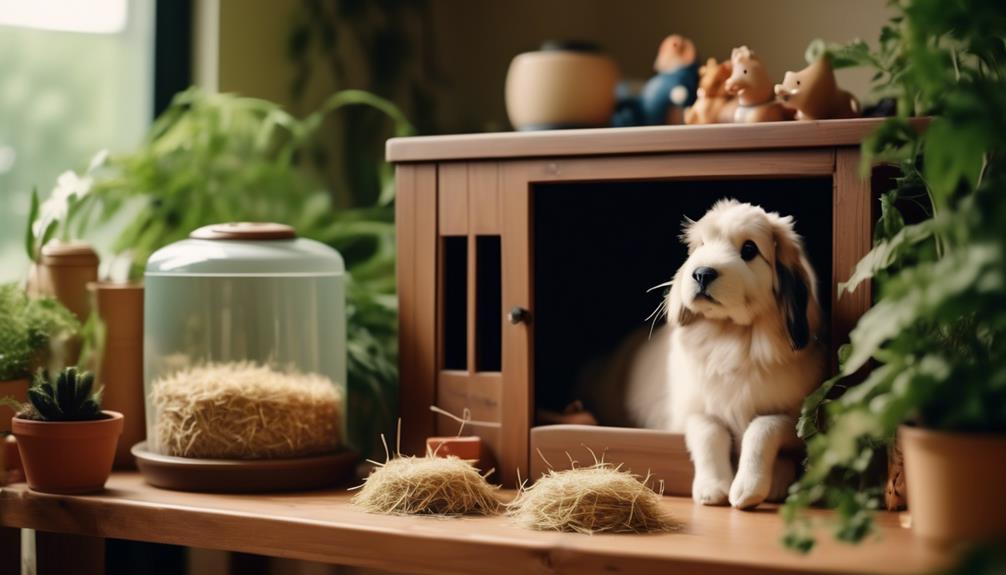
To ensure the overall well-being of your Tan Rabbit, it’s important to implement some general care tips. Here are five tips to help you take care of your Tan Rabbit:
- Provide a balanced diet: Make sure your rabbit’s diet consists of 70% hay and the rest should include pellets, fruits, vegetables, and leafy greens. This will ensure they receive all the necessary nutrients.
- Create a suitable enclosure: Whether your rabbit lives indoors or outdoors, make sure they have a spacious enclosure that allows them to hop and jump freely. This will keep them active and prevent boredom.
- Regularly clean the bedding: Spot-clean the bedding daily to remove any waste, and replace it weekly to maintain a clean and hygienic environment for your rabbit.
- Schedule regular grooming: Brush your Tan Rabbit once every two weeks to keep their fur in good condition. During heavy shedding periods, take them outside and brush them to remove excess fur.
- Provide mental stimulation: Tan Rabbits are intelligent and energetic, so it’s important to provide them with toys, tunnels, and other forms of mental stimulation to keep them entertained and prevent boredom.
Frequently Asked Questions
What Are Some Common Health Issues That Tan Rabbits May Face?
Some common health issues tan rabbits may face include dental problems, such as overgrowth or malocclusion, gastrointestinal stasis, respiratory infections, and obesity. Regular veterinary check-ups and a balanced diet are important for their well-being.
How Can You Determine the Gender of a Tan Rabbit?
To determine the gender of a tan rabbit, you can look for the presence or absence of testicles. Male rabbits have testicles, while females do not. You can also consult a veterinarian for assistance.
Can Tan Rabbits Be Trained to Do Tricks or Commands?
Yes, tan rabbits can be trained to do tricks and commands. With patience and positive reinforcement, you can teach them to respond to cues, jump through hoops, and even use a litter box.
What Are Some Common Behavioral Traits of Tan Rabbits?
Tan rabbits have common behavioral traits such as intelligence, energy, sweetness, and friendliness. They are well-suited for singles, families with older children, and can be kept indoors or outdoors. They make great house pets.
Are Tan Rabbits More Prone to Certain Environmental Allergies or Sensitivities?
Tan rabbits, like any other breed, can be prone to certain environmental allergies or sensitivities. It’s important to monitor their behavior and consult with a veterinarian if you notice any signs of discomfort or allergic reactions.
What Are the Similarities and Differences Between Tan Rabbits and Californian Rabbits?
Tan rabbits and Californian rabbits share some similarities in their appearance, such as their soft fur and long ears. However, they also have differences in their coloration, with the Californian rabbit having distinct black points on its ears, nose, tail, and feet. This fascinating history characteristics Californian rabbit breed is known for its unique patterns and markings.
Conclusion
So there you have it, the fascinating history of tan rabbits. From their origins in 1880s England to their introduction to the United States in the 1930s, these adorable creatures have captured the hearts of many.
With their unique characteristics and easy-care requirements, tan rabbits are a delightful addition to any family or individual.
Now armed with this knowledge, you can fully appreciate and care for these charming creatures.

